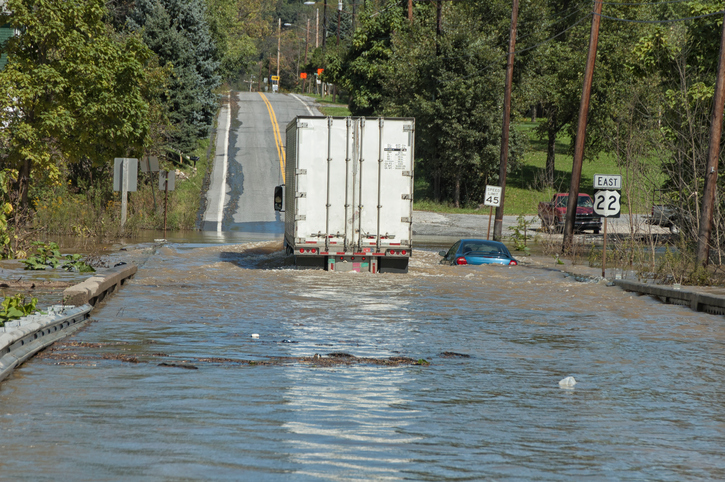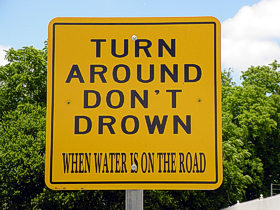
With winter upon us, it’s important to keep safe driving habits in mind so you know what to do when the weather turns nasty. It might surprise you to learn that of all weather-related deaths in the U.S., floods claim the highest number of lives.
According to the National Oceanic and Atmospheric Administration’s (NOAA) National Weather Service, there were 113 flood-related deaths in 2011, and 68 of those were vehicle-related. Unfortunately, those numbers are not an anomaly. The Center for Disease Control reports that each year over half of all flood-related deaths occur in vehicles.
Why are these numbers so high? It’s common for drivers and pedestrians to underestimate the power of floodwaters. FEMA warns that just six inches of fast moving water can take down an adult, 12 inches of water can float most vehicles while two feet of water can sweep most vehicles away. This applies to vehicles of all sizes, so driving an SUV or a truck doesn’t protect you against the force of Mother Nature. Once a vehicle is caught in floodwaters, the driver has no control. Yet drivers continue to ignore signage and barricades, putting themselves directly into dangerous areas.
 To warn against the risks, in 2005 the NOAA along with the U.S. Department of Transportation organized a national campaign called Turn Around Don’t Drown® (TADD). With signage, brochures, and other educational materials, TADD continues to encourage flood safety. Yet many drivers and pedestrians still don’t know the risks that floods can pose. In fact, even a small amount of water on the road can be a hazard.
To warn against the risks, in 2005 the NOAA along with the U.S. Department of Transportation organized a national campaign called Turn Around Don’t Drown® (TADD). With signage, brochures, and other educational materials, TADD continues to encourage flood safety. Yet many drivers and pedestrians still don’t know the risks that floods can pose. In fact, even a small amount of water on the road can be a hazard.
No two flood situations are the same. According to FEMA: “Some floods develop slowly, while others such a flash floods, can develop in just a few minutes and without visible signs of rain.” It’s good to know if you are in a high flood-risk area. A flood zone can be a low-lying area, near water such as a river or stream, or behind a levee or downstream from a dam.
The National Weather Service’s message is simple: when you come upon a flooded area, “Turn Around, Don’t Drown.” Heed warning signs, and even if you don’t see any but there’s water in the road, your safest choice is to go another way. You might think your vehicle will be safe, or you may even see another driver make it across a flooded road, but it’s wisest not to even take the risk. Keeping yourself safe should be your most important concern.
To avoid flood danger, the NOAA offers these safety tips:
- Stay tuned into the NOAA Weather Radio or another reliable news station for weather-related updates and info.
- When flooding does occur, try to get to higher ground as quickly as possible. Make sure to avoid high-risk flood zones like low spots, dips, canyons, washes, etc.
- Look for warning signs and avoid flooded areas, especially if the water is flowing fast.
- Do not attempt to cross flowing streams.
- NEVER drive through flooded roadways, since road beds might be washed out under flood waters.
- Avoid camping or parking near streams or washes, especially during high-risk conditions.
- Take extra care at night, when it is more difficult to see and avoid flooded areas.
It’s essential to know the risks and understand how you can stay safe on the roads. A defensive driving course is one step drivers can take to learn more about safe-driving techniques and be prepared for a range of challenging situations.
About Author:
Lauren Sawyer is a freelance writer. She often contributes articles for various websites and writes E-books in her spare time. She is passionate about writing articles on the automotive industry.












